The Use of Computed Tomography as a Teaching Resource for the Teaching of Structural Concrete in the Degree of Civil Engineering
Abstract
1. Introduction
2. Research Objective
3. Inclusion of Computed Tomography in the Teaching of Concrete Technology
4. Teaching Practices Related to the Use of Computed Tomography
4.1. Study of the Different Constituents of Concrete
4.2. Study of the Brittleness of High-Strength Concrete and Its Comparison with Conventional Concrete
4.3. Study of the Evolution of Concrete Microstructure during Concrete Setting and Hardening
4.4. Study of the Influence of Air-Void Agents on Concrete Microstructure
4.5. Study of the Fiber Distribution and Orientation of Fiber-Reinforced Concrete
4.6. Study of the Failure Mechanisms of Fiber-Reinforced Concrete
5. Pilot Test
6. Results
7. Conclusions
Author Contributions
Funding
Institutional Review Board Statement
Informed Consent Statement
Conflicts of Interest
References
- Vuorikari, R.; Punie, Y.; Cabrera, M. Emerging Technologies and the Teaching Profession: Ethical and Pedagogical Considerations Based on Near-Future Scenarios; EUR 30129 EN; Publications Office of the European Union: Luxembourg, 2020. [Google Scholar]
- Sosa, E.A.; Salinas, J.; de Benito, B. Emerging technologies (ETs) in education: A systematic review of the literature published between 2006 and 2016. Int. J. Emerg. Technol. Learn. 2017, 12, 128–149. [Google Scholar] [CrossRef]
- Mussig, J.; Clark, A.; Hoermann, S.; Loporcaro, G.; Loporcaro, C.; Huber, T. Imparting Materials Science Knowledge in the Field of the Crystal Structure of Metals in Times of Online Teaching: A Novel Online Laboratory Teaching Concept with an Augmented Reality Application. J. Chem. Educ. 2020, 97, 2643–2650. [Google Scholar] [CrossRef]
- Carrera, C.C.; Asensio, L.A.B. Augmented reality as a digital teaching environment to develop spatial thinking. Cartogr. Geogr. Inf. Sci. 2017, 44, 259–270. [Google Scholar] [CrossRef]
- Turkan, Y.; Radkowski, R.; Karabulut-Ilgu, A.; Behzadan, A.H.; Chen, A. Mobile augmented reality for teaching structural analysis. Adv. Eng. Inform. 2017, 34, 90–100. [Google Scholar] [CrossRef]
- Redondo, E.; Fonseca, D.; Sanchez, A.; Navarro, I. New Strategies Using Handheld Augmented Reality and Mobile Learning-teaching Methodologies, in Architecture and Building Engineering degrees. 2013 International Conference on Virtual and Augmented Reality in Education. Procedia Comput. Sci. 2013, 25, 52–61. [Google Scholar] [CrossRef]
- Kysela, J.; Storkova, P. Using augmented reality as a medium for teaching history and tourism. International Conference on New Horizons in Education, INTE 2014. Procedia-Soc. Behav. Sci. 2015, 174, 926–931. [Google Scholar] [CrossRef]
- Dunleavy, M.; Dede, C.; Mitchell, R. Affordances and Limitations of Immersive Participatory Augmented Reality Simulations for Teaching and Learning. J. Sci. Educ. Technol. 2009, 18, 7–22. [Google Scholar] [CrossRef]
- Wei, X.D.; Weng, D.D.; Liu, Y.; Wang, Y.T. Teaching based on augmented reality for a technical creative design course. Comput. Educ. 2015, 81, 221–234. [Google Scholar] [CrossRef]
- Ye, Z.; Dun, A.S.; Jiang, H.M.; Nie, C.F.; Zhao, S.L.; Wang, T.; Zhai, J. The role of 3D printed models in the teaching of human anatomy: A systematic review and meta-analysis. BMC Med. Educ. 2020, 20, 335. [Google Scholar] [CrossRef]
- Kong, X.X.; Nie, L.Y.; Zhang, H.J.; Wang, Z.L.; Ye, Q.; Tang, L.; Huang, W.H.; Li, J.Y. Do 3D Printing Models Improve Anatomical Teaching about Hepatic Segments to Medical Students? A Randomized Controlled Study. World J. Surg. 2016, 40, 1969–1976. [Google Scholar] [CrossRef]
- McMenamin, P.G.; Quayle, M.R.; McHenry, C.R.; Adams, J.W. The Production of Anatomical Teaching Resources Using Three-Dimensional (3D) Printing Technology. Anat. Sci. Educ. 2014, 7, 479–486. [Google Scholar] [CrossRef] [PubMed]
- Scalfani, V.F.; Vaid, T.P. 3D Printed Molecules and Extended Solid Models for Teaching Symmetry and Point Groups. J. Chem. Educ. 2014, 91, 1174–1180. [Google Scholar] [CrossRef]
- Ford, S.; Minshall, T. Invited review article: Where and how 3D printing is used in teaching and education. Addit. Manuf. 2017, 25, 131–150. [Google Scholar] [CrossRef]
- Chong, S.; Pan, G.T.; Chin, J.K.; Show, P.L.; Yang, T.C.K.; Huang, C.M. Integration of 3D Printing and Industry 4.0 into Engineering Teaching. Sustainability 2018, 10, 3960. [Google Scholar] [CrossRef]
- Codd, A.M.; Choudhury, B. Virtual Reality Anatomy: Is it Comparable with Traditional Methods in the Teaching of Human Forearm Musculoskeletal Anatomy? Anat. Sci. Educ. 2011, 4, 119–125. [Google Scholar] [CrossRef]
- Josman, N.; Ben-Chaim, H.M.; Friedrich, S.; Weiss, P.L. Effectiveness of virtual reality for teaching street-crossing skills to children and adolescents with autism. Int. J. Disabil. Hum. Dev. 2008, 7, 49–56. [Google Scholar] [CrossRef]
- Gerson, L.B.; Van Dam, J. A prospective randomized trial comparing a virtual reality simulator to bedside teaching for training in sigmoidoscopy. Endoscopy 2003, 35, 569–575. [Google Scholar] [CrossRef][Green Version]
- Ke, F.F.; Pachman, M.; Dai, Z.H. Investigating educational affordances of virtual reality for simulation-based teaching training with graduate teaching assistants. J. Comput. High. Educ. 2020, 32, 607–627. [Google Scholar] [CrossRef]
- Hoffman, H.; Vu, D. Virtual reality: Teaching tool of the twenty-first century. Acad. Med. 1997, 72, 1076–1081. [Google Scholar] [CrossRef]
- Chou, C.; Hsu, H.L.; Yao, Y.S. Construction of a virtual reality learning environment for teaching structural analysis. Comput. Appl. Eng. Educ. 1997, 5, 223–230. [Google Scholar] [CrossRef]
- Mayne, R.; Green, H. Virtual reality for teaching and learning in crime scene investigation. Sci. Justice 2020, 60, 466–472. [Google Scholar] [CrossRef]
- Wilhjelm, J.E.; Duun-Henriksen, J.; Hanson, L.G. A virtual scanner for teaching fundamental magnetic resonance in biomedical engineering. Comput. Appl. Eng. Educ. 2018, 26, 2197–2209. [Google Scholar] [CrossRef]
- Stawicki, S.P.; Grocias, V.H.; Schrag, S.P.; Martin, N.D.; Dean, A.J.; Hoey, B.A. The dead continue to teach the living: Examining the role of computed tomography and magnetic resonance imaging in the setting of postmortem examinations. J. Surg. Educ. 2008, 65, 200–205. [Google Scholar] [CrossRef] [PubMed]
- Hailey, D.M.; Crowe, B.L.; Burgess, I.A.; Khangure, M.S.; Morris, I. The effect of magnetic resonance imaging in a teaching hospital on patient management. Australas. Radiol. 1993, 37, 249–251. [Google Scholar] [CrossRef]
- Rundle, D.; Kishore, S.; Seshadri, S.; Wehrli, F. Magnetic resonance imaging simulator: A teaching tool for radiology. J. Digit. Imaging 1990, 3, 226–229. [Google Scholar] [CrossRef][Green Version]
- Moheit, L.; Schmid, J.D.; Schmid, J.M.; Eser, M.; Marburg, S. Acoustics Apps: Interactive simulations for digital teaching and learning of acoustics. J. Acoust. Soc. Am. 2021, 149, 1175–1182. [Google Scholar] [CrossRef]
- Corral, E.; Gómez, M.J.; Ruiz, R.; Castejon, C.; García-Prada, J.C. Effects of an android app on mechanical engineering students. Comput. Appl. Eng. Educ. 2018, 26, 1050–1057. [Google Scholar] [CrossRef]
- Wojciechowski, R.; Cellary, W. Evaluation of learners’ attitude toward learning in ARIES augmented reality environments. Comput. Educ. 2013, 68, 570–585. [Google Scholar] [CrossRef]
- Yoon, S.A.; Elinich, K.; Wang, J.; Steinmeier, C.; Tucker, S. Using augmented reality and knowledge-building scaffolds to improve learning in a science museum. Int. J. Comput. -Supported Collab. Learn. 2012, 7, 519–541. [Google Scholar] [CrossRef]
- Ab Aziz, N.A.; Ab Aziz, K.; Paul, A.; Yusof, A.M.; Noor, N.S.M. Providing augmented reality based education for students with attention deficit hyperactive disorder via cloud computing: Its advantages. In Proceedings of the 2012 14th International Conference on Advanced Communication Technology (ICACT), PyeongChang, Korea, 19–22 February 2012; pp. 577–581. [Google Scholar]
- Sumadio, D.D.; Rambli, D.R.A. Preliminary Evaluation on User Acceptance of the Augmented Reality Use for Education. In Proceedings of the Second International Conference on Computer Engineering and Applications, Bali, Indonesia, 19–21 March 2010; pp. 461–465. [Google Scholar]
- Yuen, S.C.-Y.; Yaoyuneyong, G.; Johnson, E. Augmented Reality: An Overview and Five Directions for AR in Education. J. Educ. Technol. Dev. Exch. 2011, 4, 119–140. [Google Scholar] [CrossRef]
- Yilmaz, R.M.; Goktas, Y. Using augmented reality technology in storytelling activities: Examining elementary students’ narrative skill and creativity. Virtual Real. 2017, 21, 75–89. [Google Scholar] [CrossRef]
- Kirner, T.G.; Reis, F.M.V.; Kirner, C. Development of an interactive book with augmented reality for teaching and learning geometric shapes. In Proceedings of the 7th Iberian Conference on Information Systems and Technologies (CISTI 2012), Madrid, Spain, 20–23 June 2012; pp. 1–6. [Google Scholar]
- Vicente, M.A.; González, D.C.; Mínguez, J. Recent advances in the use of computed tomography in concrete technology and other engineering fields. Micron 2019, 118, 22–34. [Google Scholar] [CrossRef] [PubMed]
- Mena, A.; González, D.C.; Mínguez, J.; Vicente, M.A. Computed tomography beyond medicine: Applications to the microstructural study of concrete and other engineering materials. Hormigón Acero 2020, 71, 7–19. [Google Scholar]
- Seidelmann, F.E.; Reich, N.E. Computed tomography using the EMI scanner: Part I. The apparatus, the normal scan, and its variants. J. Am. Osteopath. Assoc. 1975, 74, 1125–1132. [Google Scholar]
- Watson, R.C. The whole body scan. Computed tomography (CT)—A major advance in the diagnosis of cancer. Clin. Bull. 1976, 6, 47–51. [Google Scholar]
- Jelden, G.L.; Chernak, E.S.; Rodriguez Antunez, A.; Haaga, J.R.; Lavik, P.S.; Dhaliwal, R.S. Further progress in CT scanning and computerized radiation-therapy treatment planning. Am. J. Roentgenol. 1976, 127, 179–185. [Google Scholar] [CrossRef][Green Version]
- Jungers, W.L.; Minns, R.J. Computed tomography and biomechanical analysis of fossil long bones. Am. J. Phys. Anthropol. 1979, 50, 285–290. [Google Scholar] [CrossRef] [PubMed]
- Osti, F.; Santi, G.M.; Neri, M.; Liverani, A.; Frizziero, L.; Stilli, S.; Maredi, E.; Zarantonello, P.; Gallone, G.; Stallone, S.; et al. CT conversion workflow for intraoperative usage of bony models: From DICOM data to 3D printed models. Appl. Sci. 2019, 9, 708. [Google Scholar] [CrossRef]
- Notman, D.N.H.; Tashjian, J.; Aufderheide, A.C.; Cass, O.W.; Shane, O.C.; Berquist, T.H.; Gray, J.E.; Gedgaudas, E. Modern imaging and endoscopic biopsy techniques in Egyptian mummies. Am. J. Roentgenol. 1986, 146, 93–96. [Google Scholar] [CrossRef]
- Cheng, Q.; Zhang, X.; Guo, J.; Wang, B.; Lei, Y.; Zhou, G.; Fu, Y. Application of computed tomography in the analysis of glass beads unearthed in Shanpula cemetery (Khotan), Xinjiang Uyghur Autonomous Region. Archaeol. Anthropol. Sci. 2019, 11, 937–945. [Google Scholar] [CrossRef]
- Hilderbrand, B.; Harrington, T. Mapping of Materials Stress with Ultrasonic Tomography. In Proceedings of the DARPA/AFML Review of Progress in Quantitative NDE, La Jolla, CA, USA, 17–21 July 1978; p. 49. [Google Scholar]
- More, N.; Basse-Cathalinat, B.; Baquey, C.; Lacroix, F.; Ducassou, D. Application of novel techniques of medical imaging to the non-destructive analysis of carbon-carbon composite materials. Nucl. Instrum. Methods Phys. Res. 1983, 214, 531–536. [Google Scholar] [CrossRef]
- Kar, J.; Dinda, S.K.; Roy, G.G.; Roy, S.K.; Srirangam, P. X-ray tomography study on porosity in electron beam welded dissimilar copper–304SS joints. Vacuum 2018, 149, 200–206. [Google Scholar] [CrossRef]
- Yu, W.; Sing, S.L.; Chua, C.K.; Tian, X. Influence of re-melting on surface roughness and porosity of AlSi10Mg parts fabricated by selective laser melting. J. Alloys Compd. 2019, 792, 574–581. [Google Scholar] [CrossRef]
- Petrovic, A.M.; Siebert, J.E.; Rieke, P.E. Soil Bulk Density Analysis in Three Dimensions by Computed Tomographic Scanning. Soil Sci. Soc. Am. J. 1982, 46, 445–450. [Google Scholar] [CrossRef]
- Wang, G.; Jiang, C.; Shen, J.; Han, D.; Qin, X. Deformation and water transport behaviors study of heterogenous coal using CT-based 3D simulation. Int. J. Coal Geol. 2019, 211, 103204. [Google Scholar] [CrossRef]
- Morgan, I.L.; Ellinger, H.; Klinksiek, R.; Thomson, J.N. Examination of Concrete by Computerized Tomography. ACI J. Proc. 1980, 77, 23–27. [Google Scholar]
- Wang, Y.S.; Dai, J.G. X-ray computed tomography for pore-related characterization and simulation of cement mortar matrix. NDTE Int. 2017, 86, 28–35. [Google Scholar] [CrossRef]
- Vicente, M.A.; González, D.C.; Mínguez, J.; Tarifa, M.A.; Ruiz, G.; Hindi, R. Influence of the pore morphology of high strength concrete on its fatigue life. Int. J. Fatigue 2018, 112, 106–116. [Google Scholar] [CrossRef]
- Mínguez, J.; Vicente, M.A.; González, D.C. Pore morphology variation under ambient curing of plain and fiber-reinforced high performance mortar at an early age. Constr. Build. Mater. 2019, 198, 718–731. [Google Scholar] [CrossRef]
- Vicente, M.A.; Mínguez, J.; González, D.C. Computed tomography scanning of the internal microstructure, crack mechanisms, and structural behavior of fiber-reinforced concrete under static and cyclic bending tests. Int. J. Fatigue 2019, 121, 9–19. [Google Scholar] [CrossRef]
- Vicente, M.A.; Ruiz, G.; González, D.C.; Mínguez, J.; Tarifa, M.; Zhang, X. CT-Scan study of crack patterns of fiber-reinforced concrete loaded monotonically and under low-cycle fatigue. Int. J. Fatigue 2018, 114, 138–147. [Google Scholar] [CrossRef]
- Vicente, M.A.; Ruiz, G.; González, D.C.; Mínguez, J.; Tarifa, M.; Zhang, X. Effects of fiber orientation and content on the static and fatigue behavior of SFRC by using CT-Scan technology. Int. J. Fatigue 2019, 128, 105178. [Google Scholar] [CrossRef]
- Savoldi, F.; Yeung, A.W.K.; Tanaka, R.; Zadeh, L.M.S.; Montalvao, C.; Bornstein, M.M.; Tsoi, J.K.H. Dry Skulls and Cone Beam Computed Tomography (CBCT) for Teaching Orofacial Bone Anatomy to Undergraduate Dental Students. Anat. Sci. Educ. 2020, 14, 62–70. [Google Scholar] [CrossRef]
- Rutty, J.; Biggs, M.; Dowsett, D.; Kitchener, A.; Coltman, N.; Rutty, G. Post mortem computed tomography: An innovative tool for teaching anatomy within pre-registration nursing curricula. Nurse Educ. Today 2019, 76, 154–164. [Google Scholar] [CrossRef]
- Jaber, J.R.; Carrascosa, C.; Arencibia, A.; Corbera, J.A.; Ramirez, A.S.; Melian, C. 3-D computed tomography reconstruction: Another tool to teach anatomy in the veterinary colleges. Iran. J. Vet. Res. 2018, 19, 1–2. [Google Scholar]
- Murakami, T.; Tajika, Y.; Ueno, H.; Awata, S.; Hirasawa, S.; Sugimoto, M.; Kominato, Y.; Tsushima, Y.; Endo, K.; Yorifuji, H. An Integrated Teaching Method of Gross Anatomy and Computed Tomography Radiology. Anat. Sci. Educ. 2014, 7, 438–449. [Google Scholar] [CrossRef] [PubMed]
- Gagg, C.R. Cement and concrete as an engineering material: An historic appraisal and case study analysis. Eng. Fail. Anal. 2014, 40, 114–140. [Google Scholar] [CrossRef]
- Amirault, R.J. Distance learning in the 21st century University. Q. Rev. Distance Educ. 2012, 13, 253–265. [Google Scholar]
- Cassidy, E.D.; Colmenares, A.; Jones, G.; Manolovitz, T.; Shen, L.; Vieira, S. Higher Education and Emerging Technologies: Shifting Trends in Student Usage. J. Acad. Librariansh. 2014, 40, 124–133. [Google Scholar] [CrossRef]
- Gikas, J.; Grant, M.M. Mobile computing devices in higher education: Student perspectives on learning with cellphones, smartphones & social media. Internet High. Educ. 2013, 19, 18–26. [Google Scholar]
- Paul, J.A.; Cochran, J.D. Key interactions for online programs between faculty, students, technologies, and educational institutions: A holistic framework. Q. Rev. Distance Educ. 2013, 14, 49–62. [Google Scholar]
- Qasrawi, H. Optimal method for teaching concrete technology for civil engineering students. MOJ Civ. Eng. 2018, 4, 225–235. [Google Scholar] [CrossRef]
- Schaufeli, W.; Bakker, A. UWES. Utrecht Work Engagement Scale; Occupational Health Psychology Unit, Utrecht University: Utrecht, The Netherlands, 2004. [Google Scholar]
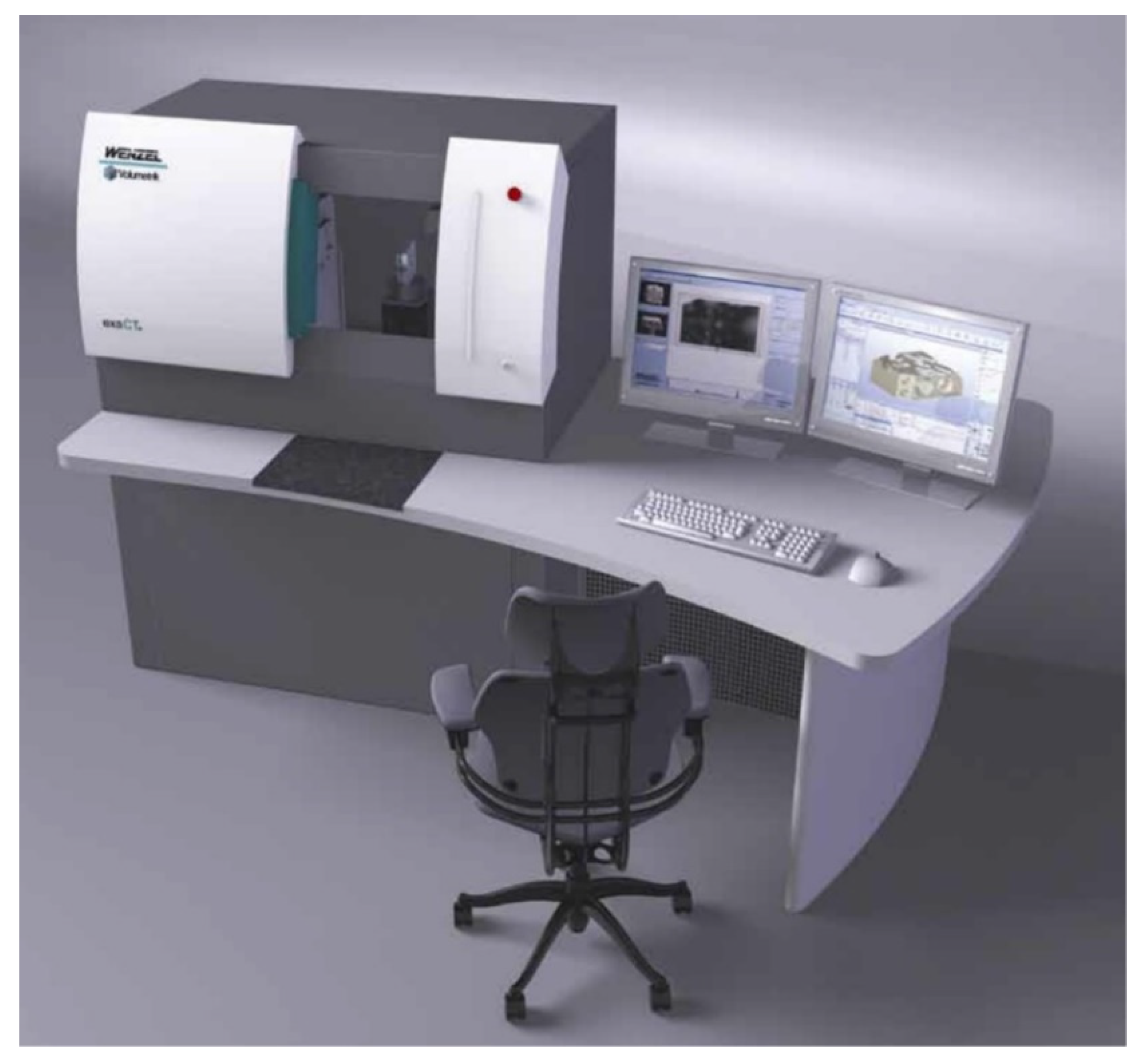
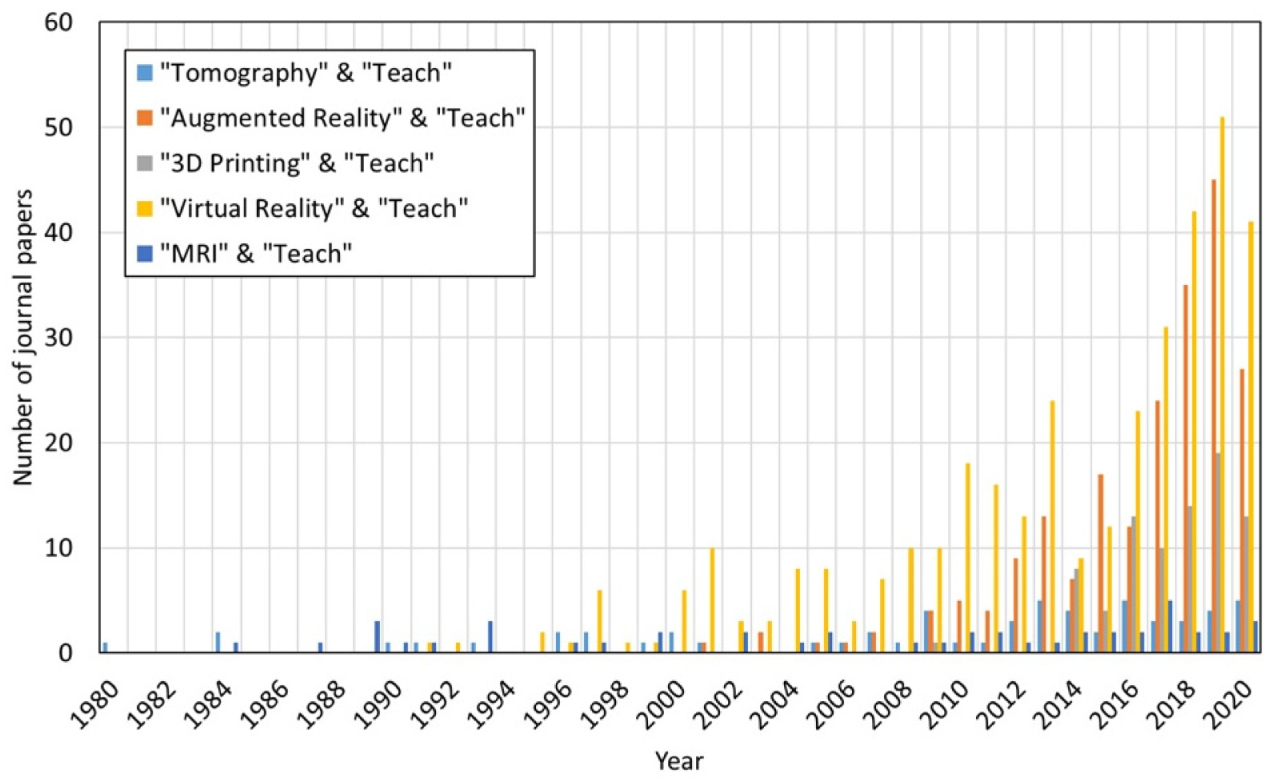

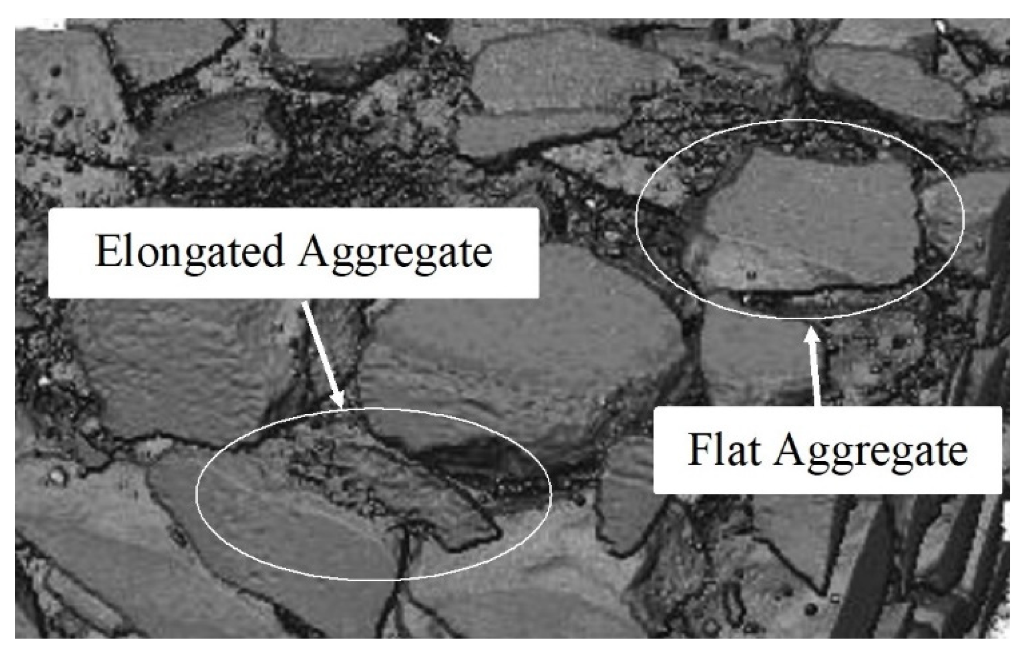

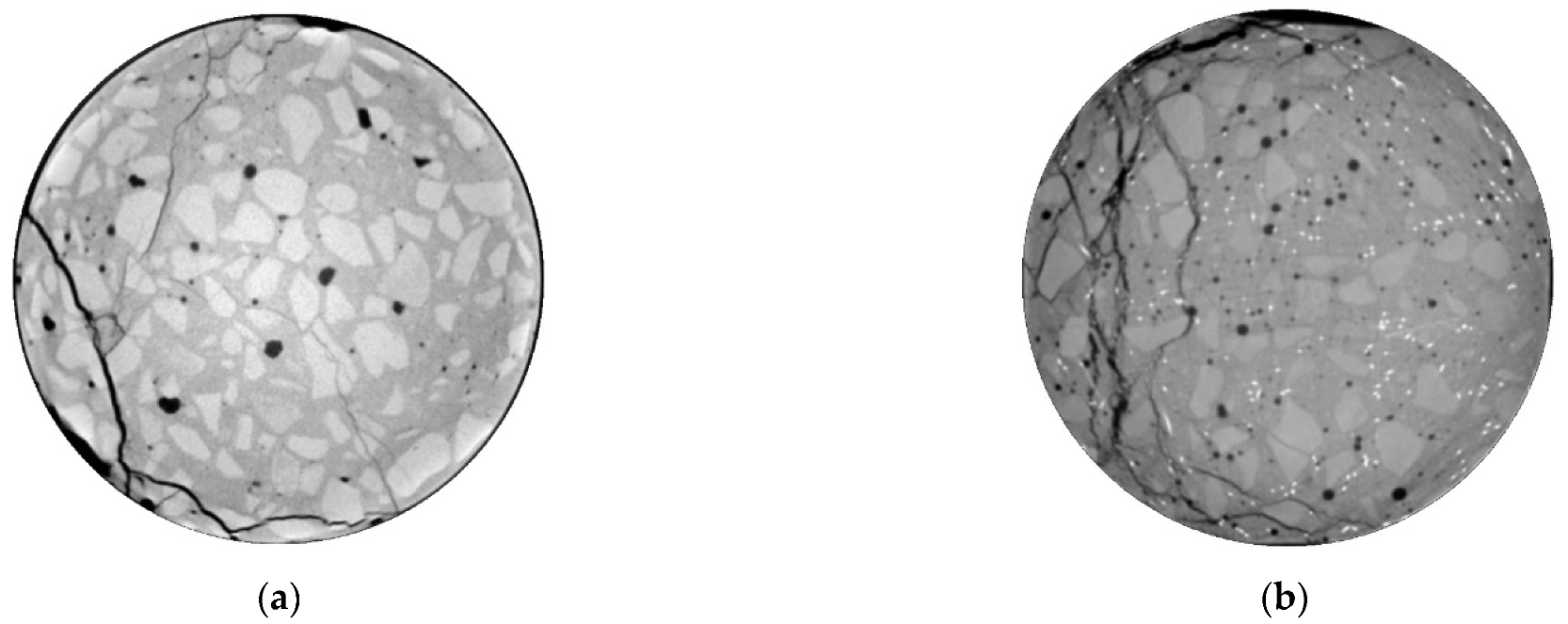




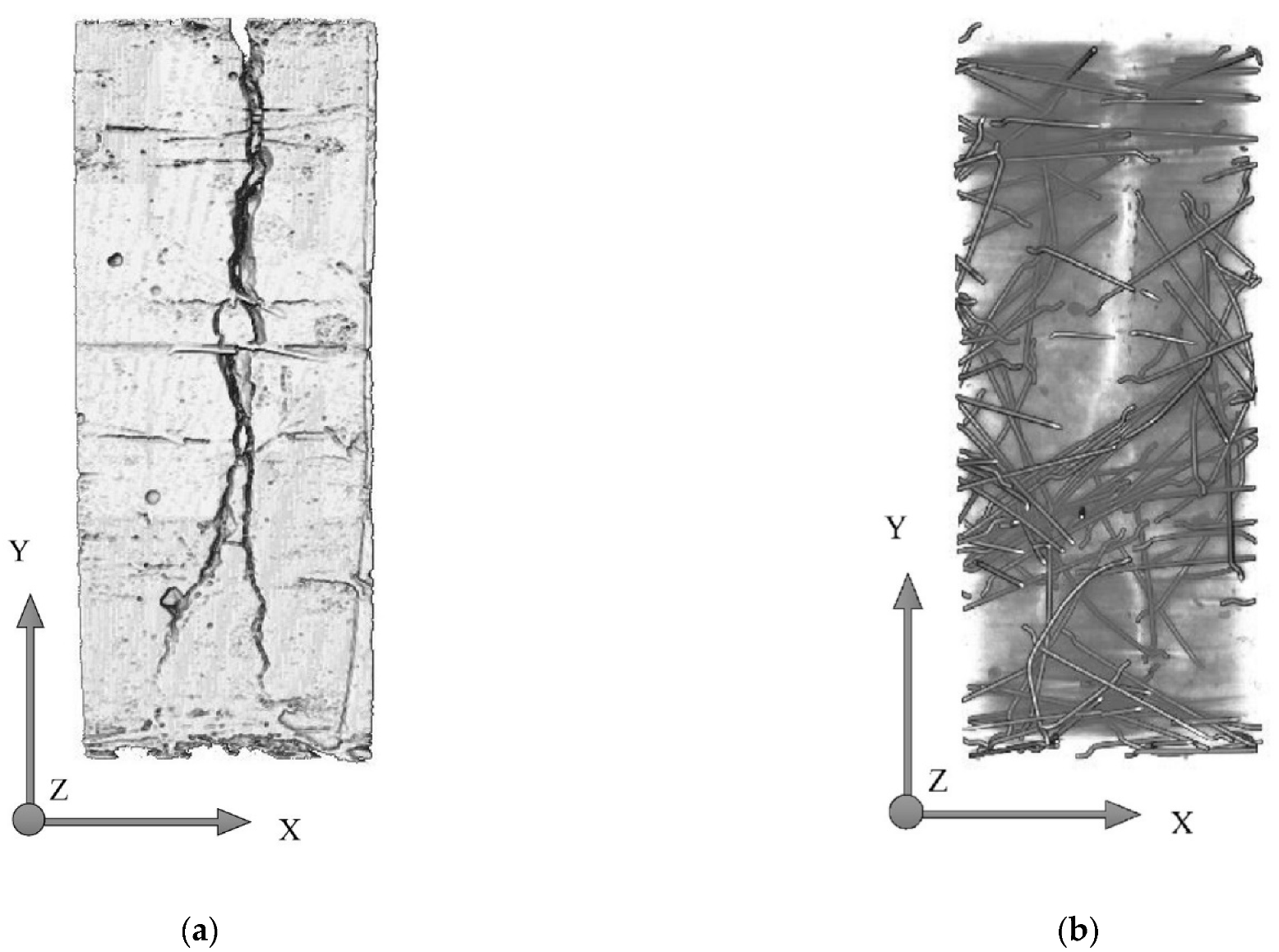
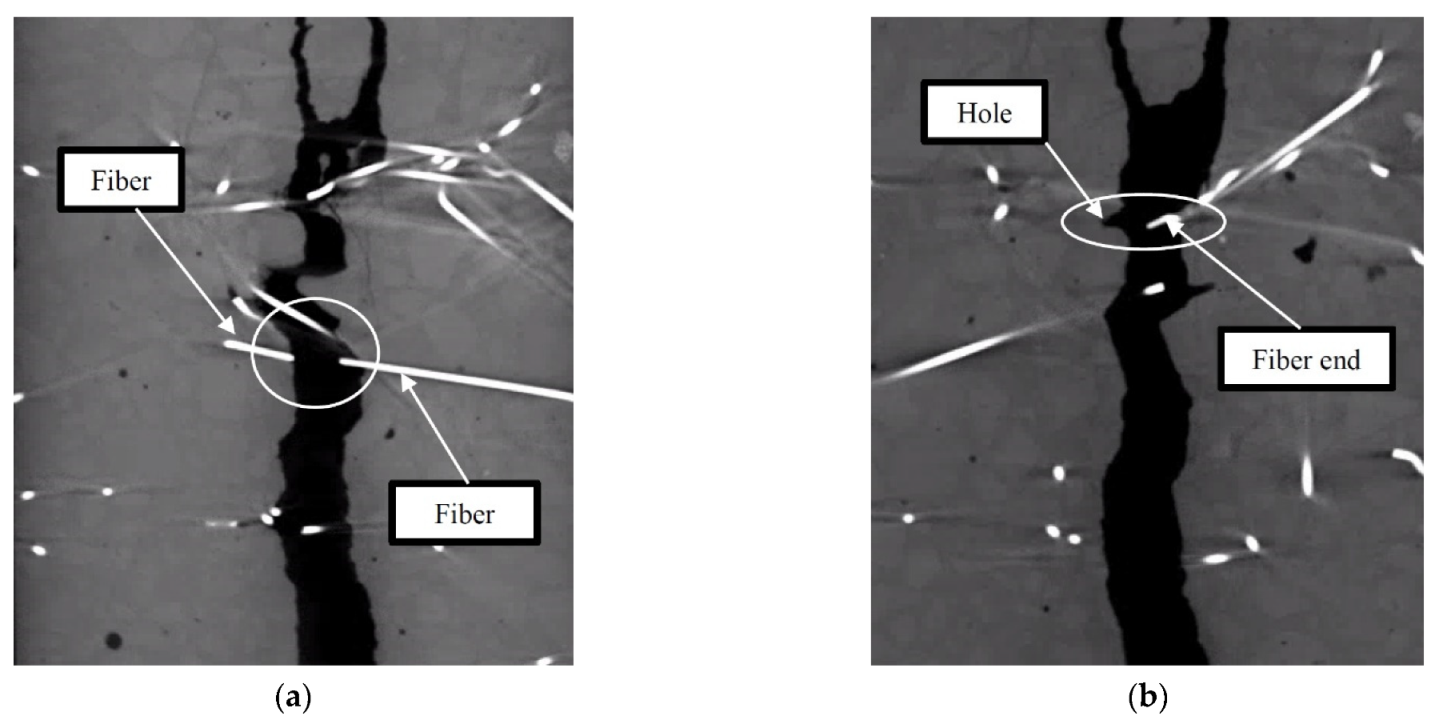
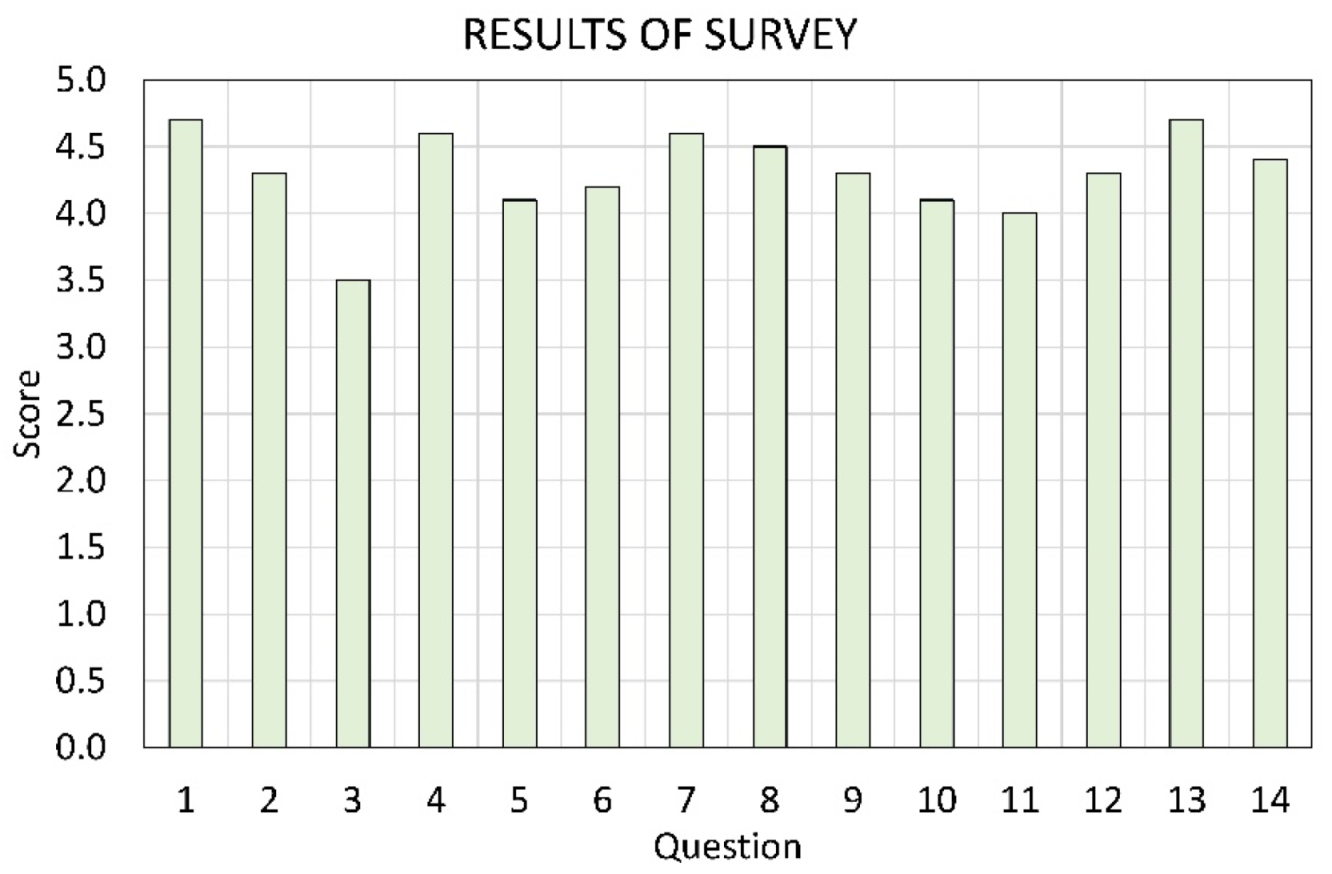
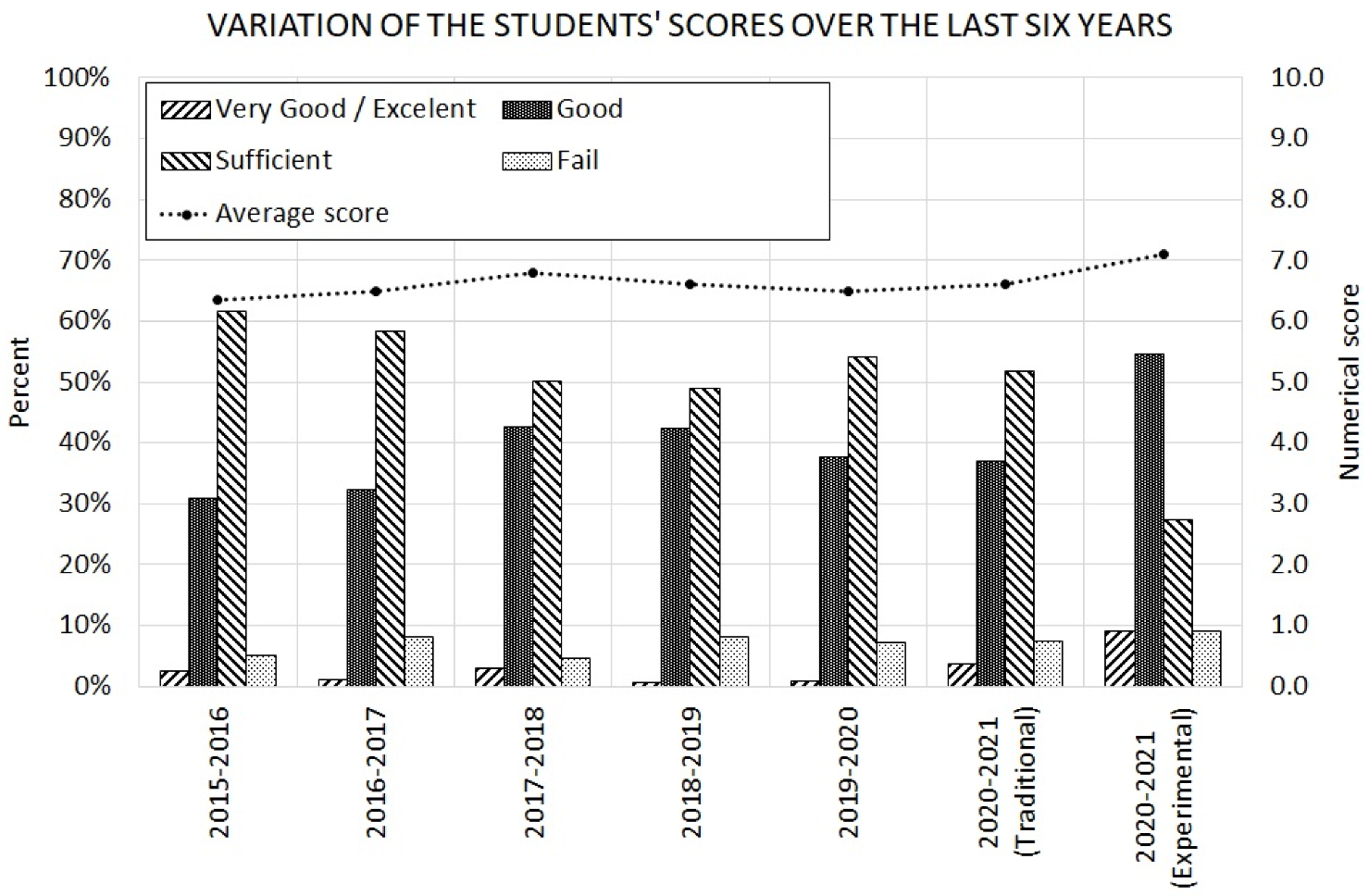
| Please indicate your level of agreement with the following statement. 0 = Totally disagree 1 = Disagree 2 = Partially disagree 3 = Partially agree 4 = Agree 5 = Totally agree | |
| 1 | Incorporating new scientific advances into classes is motivating |
| 2 | The practical classes on new technologies are more interesting |
| 3 | The practical classes on new technologies are more instructive than the conventional ones |
| 4 | The practical classes on new technologies are better for my professional future |
| 5 | The subject is best learned when it is taught using new technologies |
| 6 | Interest and motivation for the subject increases when new technologies are used for teaching |
| 7 | Computed tomography is useful to understand the behavior of any material |
| 8 | Computed tomography is useful to understand the behavior of concrete |
| 9 | Using computed tomography, I better understand some aspects shown in the master classes |
| 10 | Performing practical classes based on the results of computed tomography scans is good for my training |
| 11 | Computed tomography helps me to interconnect concepts studied in other subjects |
| 12 | Carrying out practical classes using new technologies improves my perception about the quality of my university |
| 13 | Carrying out practical classes using new technologies improves my perception about the usefulness of my career |
| 14 | Carrying out practical classes using new technologies improves the perception about the quality of the teachers of the subject |
| Range of Questions | Mean Score | Standard Deviation |
|---|---|---|
| 1–14 | 4.31 | 0.32 |
| 1–6 | 4.23 | 0.43 |
| 7–11 | 4.30 | 0.25 |
| 12–14 | 4.47 | 0.21 |
Publisher’s Note: MDPI stays neutral with regard to jurisdictional claims in published maps and institutional affiliations. |
© 2021 by the authors. Licensee MDPI, Basel, Switzerland. This article is an open access article distributed under the terms and conditions of the Creative Commons Attribution (CC BY) license (https://creativecommons.org/licenses/by/4.0/).
Share and Cite
González, D.C.; Mínguez, J.; Vicente, M.A. The Use of Computed Tomography as a Teaching Resource for the Teaching of Structural Concrete in the Degree of Civil Engineering. Educ. Sci. 2021, 11, 768. https://doi.org/10.3390/educsci11120768
González DC, Mínguez J, Vicente MA. The Use of Computed Tomography as a Teaching Resource for the Teaching of Structural Concrete in the Degree of Civil Engineering. Education Sciences. 2021; 11(12):768. https://doi.org/10.3390/educsci11120768
Chicago/Turabian StyleGonzález, Dorys C., Jesús Mínguez, and Miguel A. Vicente. 2021. "The Use of Computed Tomography as a Teaching Resource for the Teaching of Structural Concrete in the Degree of Civil Engineering" Education Sciences 11, no. 12: 768. https://doi.org/10.3390/educsci11120768
APA StyleGonzález, D. C., Mínguez, J., & Vicente, M. A. (2021). The Use of Computed Tomography as a Teaching Resource for the Teaching of Structural Concrete in the Degree of Civil Engineering. Education Sciences, 11(12), 768. https://doi.org/10.3390/educsci11120768







